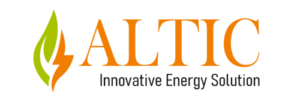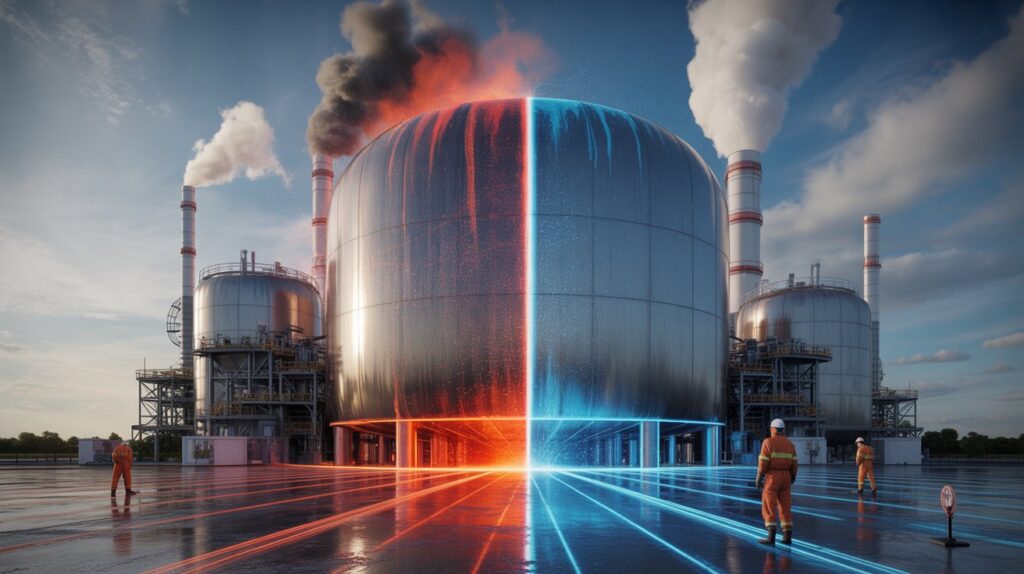Energy-saving paints are rapidly gaining recognition as one of the most effective and accessible solutions for boosting efficiency and sustainability in the industrial sector. Here is an in-depth guide exploring how these paints are transforming industrial environments, their underlying technologies, latest trends, real-world case studies, and practical advice on deployment.
The Evolution of Energy-Saving Paints
Industrial Paints have evolved far beyond basic surface protection. Advanced formulations now offer measurable improvements in energy consumption, equipment lifespan, and environmental compliance. Features such as heat-reflective pigments, nanotechnology-driven coatings, and solar-energy harnessing paints are redefining standards for sustainability.
The market for energy-efficient coatings was valued at over $24 billion in 2024 and is projected to grow at a CAGR of nearly 7% through the next decade, reflecting robust industry adoption.
Why Paints Matter for Industrial Efficiency
The energy footprint of industrial operations includes significant losses due to heat absorption, inefficient conditioning, and poorly insulated structures. Paints engineered for energy efficiency can:
- Reflect solar heat, reducing cooling costs.
- Enable faster, lower-temperature curing, slashing process energy demands.
- Prolong the lifespan of machinery and infrastructure by protecting against temperature fluctuations, corrosion, and UV radiation.
The introduction of formulations like low-cure paints and heat-reflective coatings demonstrably lower operational expenses, with case studies reporting up to 30% reductions in energy use and maintenance costs.
Cutting-Edge Technologies in Industrial Coatings
2025 industry trends spotlight several game-changing innovations:
- Heat-Reflective Coatings: New generations of “cool roof” paints scatter and reflect infrared solar radiation, minimizing heat absorption by up to 30% in factories and warehouses.
- Photovoltaic Solar Paints: Engineered with nano-particles, these coatings not only decrease heat intake but also generate electricity directly from sunlight, simplifying the path to net-zero operations.
- UV/LED Curable Paints: Reduce energy used during application and drying by allowing instant on/off curing cycles.
- Self-Healing and Smart Paints: Embedded sensors and nanomaterials allow the paint to adjust its reflectivity and healing properties, further improving insulation and equipment reliability.
Practical Benefits: From Cost Savings to Carbon Footprint Reduction
Energy-saving coatings generate both direct and indirect advantages:
- Lower Cooling Bills: By reflecting solar radiation, indoor temperatures remain cooler, significantly reducing reliance on air conditioning.
- Less Maintenance: Longer-lasting surfaces mean fewer repairs and repaints, cutting material costs.
- Reduced Carbon Emissions: Lower energy consumption directly translates to a smaller greenhouse gas footprint for industrial enterprises.
These cumulative effects are making such paints an integral part of sustainability strategies and governmental compliance programs worldwide.
Trending Applications in 2025
Energy-saving paints are not restricted to building exteriors. New applications are redefining industrial efficiency:
- Manufacturing Plants: Warehouses and assembly facilities apply cool roof and wall paints to manage heat, reduce HVAC needs, and optimize indoor conditions for machinery and employees.
- Automotive: OEMs use low-cure paints to minimize the energy load in paint shops while meeting high durability standards.
- Food Processing: The use of insulating coatings on air-conditioning units and production lines can save up to 15% on cooling costs.
- Electronics and Data Centers: Passive cooling paints help lower ambient temperatures, reducing HVAC and enabling safer equipment operation.
How to Deploy Energy-Saving Paints: Step-by-Step Guide
Adopting energy-saving paints requires careful selection and application. The process typically involves:
- Energy Audit: Assess current energy consumption and identify heat-intensive areas (walls, roofs, machines, ducts).
- Product Selection: Choose paints with proven energy-efficient properties for your specific use case (reflective, UV-curable, photovoltaic).
- Surface Preparation: Clean and prime surfaces for optimal adhesion and coating performance.
- Application: Use recommended tools and techniques—roller, brush, or industrial sprayer—to apply uniformly; multiple coats may be needed.
- Curing: Follow manufacturer guidelines for drying/curing times, especially for UV or LED products.
- Performance Monitoring: Track energy consumption and indoor temperature effects to quantify results and justify wider deployment.
Future Directions: The 2025 Horizon and Beyond
The paint and coating industry is rapidly integrating artificial intelligence, IoT, and big data to optimize formulations and monitor energy performance in real time. Digital twins, embedded sensors, and advanced analytic platforms allow manufacturers to fine-tune operations for peak efficiency.
Moreover, regulatory frameworks are pushing wider adoption, with building codes increasingly requiring energy-efficient retrofits and products like solar paint to meet future environmental targets.
Common Challenges and How to Overcome Them
While the benefits are clear, implementing energy-saving coatings does pose some challenges:
- Initial Cost: While upfront costs may be higher, the payback term is typically under 2-3 years due to lower energy and maintenance bills.
- Application Complexity: Some advanced paints (e.g., UV, solar) require specialized skills or equipment.
- Compatibility: Ensuring surface compatibility and primer requirements is vital for performance.
- Staff Training: Achieving full energy efficiency requires buy-in from operational staff, including training on the latest materials and processes.
Sustainability and Compliance
Regulatory pressures and market preferences for decarbonization are accelerating the shift to energy-saving paints across sectors. Green certifications, incentives for “cool roof” or solar paints, and strict emission standards are pushing even conservative industries to adopt these solutions.
FAQs: Industry Leaders Answer Key Questions
How much can energy-saving paints reduce bills?
Typical savings range from 15-30%, depending on facility type, location, and heat load.
Do these paints last as long as conventional coatings?
Modern products are engineered for weather resistance and UV stability, matching or exceeding traditional coatings’ lifespans.
Are there drawbacks or risks?
Advanced coatings may require specific primers, higher skill levels for application, and occasional compatibility checks with existing surfaces.
Conclusion: The Hidden Hero Rises
Energy-saving paints are set to become the hidden hero of industrial efficiency in 2025 and beyond. Through reducing operational costs, boosting sustainability, and driving compliance, they are empowering industries to transition to a cooler, smarter, and more resilient future.
Whether upgrading a factory roof, retrofitting manufacturing lines, or planning sustainability initiatives, investing in innovative paints is a strategic and cost-effective decision—with performance and ROI now hard to ignore.
For facilities managers, sustainability officers, and industrial engineers, the message is clear: energy-saving paints are no longer optional—they are essential tools in the quest for industrial excellence.

